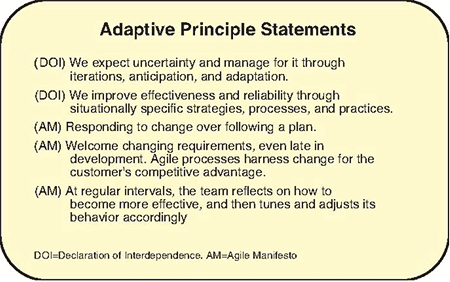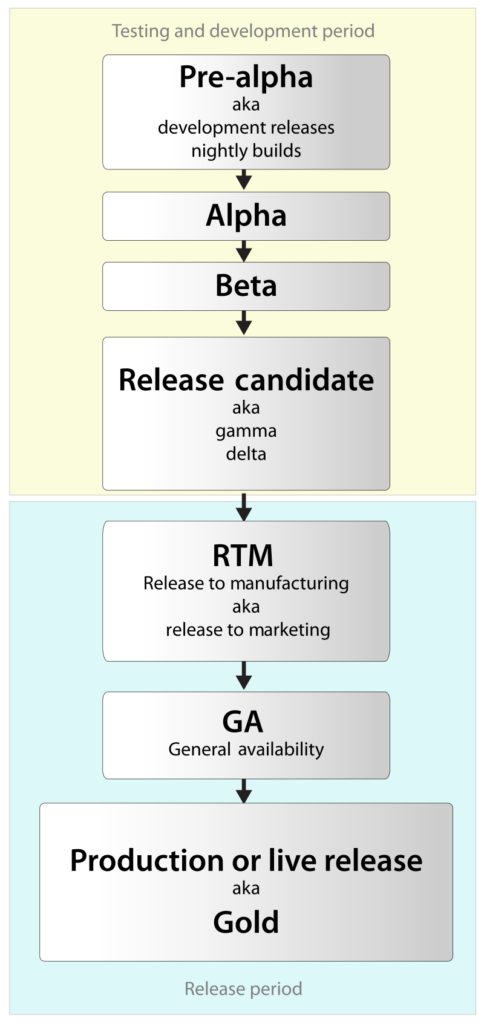The Agile Manifesto: Values and Principles
The Agile Manifesto, born in 2001, revolutionized software development methodologies by promoting a set of values and principles that prioritize flexibility, collaboration, and continuous improvement. Its core values emphasize the importance of individuals and interactions, working software, customer collaboration, and responding to change over rigid adherence to predefined plans. These values guide twelve significant principles that shape software development practices worldwide.
Values of the Agile Manifesto
A. Individuals and Interactions
Prioritizing People Over Processes
Agile methodologies prioritize human interactions and team dynamics over stringent processes. It places emphasis on fostering open communication, collaboration, and trust among developers, customers, and stakeholders. This creates an environment conducive to innovation and teamwork.

B. Working Software
Emphasis on Functional Software Delivery
The manifesto stresses the importance of delivering functional software early and continuously, rather than getting entangled in excessive documentation or planning. Agile focuses on continuous iteration and improvement based on real-world feedback, ensuring software meets evolving needs.
C. Customer Collaboration
Breaking Traditional Developer-Customer Barriers
Agile shifts the traditional adversarial relationship between developers and customers, encouraging close collaboration throughout the development process. This ensures the final product aligns closely with customer needs and expectations, enhancing overall satisfaction.
D. Responding to Change
Embracing Change as an Inevitable Part
Agile methodologies embrace change as an inevitable part of the development process. Agile provides flexible frameworks and practices that allow teams to adapt quickly to new requirements, evolving priorities, and unforeseen challenges, fostering resilience and adaptability.

Principles Embedded in the Agile Manifesto
A. Customer Satisfaction through Early and Continuous Delivery
Significance of Early Software Delivery
Early and continuous software delivery contributes significantly to customer satisfaction. This approach allows for adapting to changing requirements, providing the customer with a competitive edge.
B. Delivering Working Software Frequently
Advantages of Shorter Timescales
Delivering working software frequently, preferably within shorter timescales, ensures more timely responses to changing market demands and customer needs. It enables a quicker feedback loop and reduces development risks.
C. Daily Collaboration between Business People and Developers
Importance of Daily Interactions
Daily collaboration between business representatives and developers fosters clear communication and alignment with business objectives. This interaction ensures that development efforts are in sync with business requirements.
D. Building Projects Around Motivated Individuals
Creating a Supportive Environment
Creating an environment that supports and empowers motivated individuals is crucial for successful project outcomes. Trust and empowerment foster a sense of ownership and accountability among team members.
E. Importance of Face-to-Face Conversation
Efficient Communication in Development Teams
Face-to-face conversations within development teams facilitate efficient and effective communication. Direct interactions often lead to a better understanding of complex ideas, reducing misunderstandings.
F. Working Software as the Primary Measure of Progress
Tracking Progress Through Functionality
Functional software delivery is the primary measure of progress in Agile. It serves as a tangible indicator of advancement and project success, offering a clear representation of project milestones.

G. Promoting Sustainable Development
Maintaining a Consistent Development Pace
Sustainable development requires maintaining a consistent pace indefinitely. Involving sponsors, developers, and users ensures a steady workflow without burnout or compromise on quality.
H. Continuous Attention to Technical Excellence
Enhancing Agility Through Excellence
Continuous attention to technical excellence and good design is pivotal for maintaining agility. It ensures the consistent delivery of high-quality, adaptable software.
I. Embracing Simplicity
Maximizing Productivity Through Simplicity
Simplicity is essential in Agile. Maximizing productivity by minimizing unnecessary work enables teams to focus on essential tasks and deliver value efficiently.
J. Self-Organizing Teams
Encouraging Autonomy and Innovation
Empowering self-organizing teams encourages innovation and adaptation. These teams are agile and can quickly respond to changing requirements without external dependencies.
K. Periodic Team Reflection and Adaptation
Learning and Improving
Regular team reflection and adaptation based on feedback are integral to Agile. It enables teams to identify areas for improvement and adjust behaviors for increased effectiveness.
IV. Adaptability of the Agile Manifesto
A. Context-Specific Application
The Agile Manifesto’s principles are not rigid rules but adaptable guidelines. Their application varies depending on the specific project context, team dynamics, and organizational needs. Agile allows for flexibility in tailoring methodologies to suit diverse scenarios.
B. Value in Today’s Fast-Paced World
The enduring value of the Agile Manifesto lies in its adaptability to the fast-paced and ever-evolving landscape of modern software development. Its emphasis on flexibility, collaboration, and continuous improvement aligns well with the needs of today’s dynamic industries.
Conclusion:
In conclusion, the Agile Manifesto remains a cornerstone in the realm of software development, offering a set of values and principles that transcend time and trends. Formulated in 2001, its impact continues to shape the way software is conceived, developed, and delivered.
By prioritizing individuals and interactions over rigid processes, emphasizing the early delivery of working software, fostering collaboration with customers, and embracing adaptability to change, Agile methodologies have redefined how teams approach development.
The manifesto’s guiding principles, from customer satisfaction through continuous delivery to the promotion of sustainable development and technical excellence, underscore the importance of agility, innovation, and responsiveness within software development teams.
Moreover, the Agile Manifesto is not confined to a strict set of rules but rather serves as a flexible framework adaptable to various contexts and projects. Its enduring relevance lies in its ability to accommodate evolving technologies, market demands, and customer expectations.
As software landscapes evolve, the Agile Manifesto’s core values and principles continue to provide a compass for teams navigating the complexities of modern development. It champions collaboration, adaptation, and continuous improvement, essential traits in an era marked by rapid change and innovation.
Embracing the essence of the Agile Manifesto empowers teams to build robust, customer-centric solutions, fostering a culture of innovation, responsiveness, and success in the ever-evolving domain of software development.
Bibliography
- www.umsl.edu/~hugheyd/is6840/agile.htmlwww.fai.gov/content/transcript-agile-acquisitions-101saffroninteractive.com/how-to-enable-the-agile-approach-in-your-organisation/www.learnsqa.com/istqb-foundation-level-agile-tester-study-guide-chapter-1/www.dau.edu/acquipedia/pages/ArticleContent.aspx?itemid=577gds.blog.gov.uk/2012/12/12/a-day-in-the-life-of-a-delivery-manager/
🌟 Want to take your digital presence to the next level? Let’s collaborate!
Contact Vedant Rao at VRatwork for tailored solutions:
📞 Call: +91 9699544186 📧 Email: vedantatwork21@gmail.com
Get in touch today and let’s elevate your digital strategy together! 🚀

This Post Has 2 Comments
Pingback: Revolutionizing the Digital Realm: 12 Key Insights on Software Development
Pingback: Partner Up for Success: 10 Tips for Choosing Software Development Outsourcing Companies